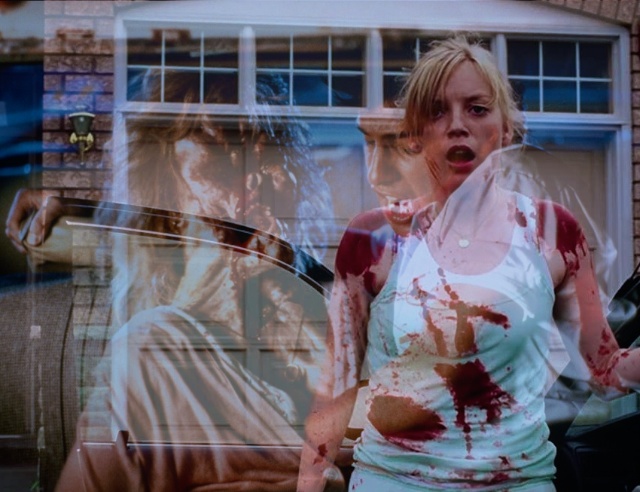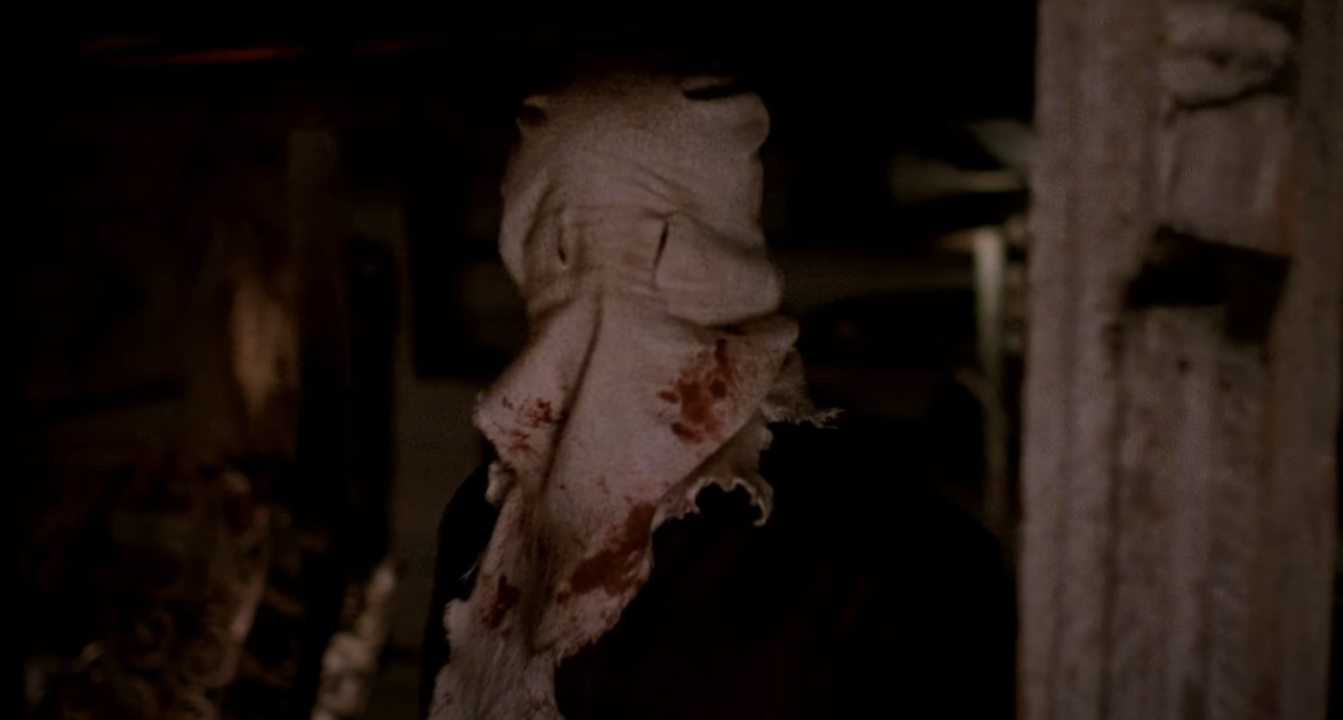Editorials
[Remake vs. Remake] ‘Dawn of the Dead (2004)’ or ‘The Blob (1988)’?

In last week’s Remake vs. Remake segment I pitted Dawn of the Dead (2004) against the much maligned Fright Night (2011). While I don’t dislike that version of Fright Night as much as I used to, there’s no doubt that Zack Snyder (aided by James Gunn’s script) trounced it thoroughly in this bracket with his take on Romero’s 1978 masterpiece.
Singing my many praises of Dawn, I forgot to mention that one of the reasons I feel the movie works so well is that it largely abandons the structure, tone and characters of the original film. It doesn’t try to compete on that playing field, instead taking the basic premise – zombies in a mall – and doing its own thing with it.
But what happens when you pit the Dawn of the Dead remake against Chuck Russell’s now classic 1988 take on The Blob? You have bracket of riches. Like John Carpenter’s remake of The Thing in 1982, The Blob was a commercial dud. Also like John Carpenter’s remake of The Thing, it has subsequently gone on to be celebrated and is now many fans’ favorite installment in the franchise (or “ongoing IP exploration”, if you will).
While I greatly enjoy Dawn of the Dead, I think The Blob is a movie I could probably watch 20 times a year. Russell and his co-writer Frank Darabont were hot off A Nightmare on Elm Street 3: Dream Warriors and it turns out that that (admittedly very good) film was just a dry run for what they’d be able to pull off with The Blob. Not only does the film have some of the most intensely entertaining and inventive kill sequences of the 80’s, it strikes a pitch perfect tone. Seriously, this is a horror movie that it actually feels good to watch!
The setting is perfect, Arborville might be in my list of the top 10 fictional places I’d like to live. The characters are smart (enough) and the plot chugs along quickly without ever sacrificing detail or atmosphere. The film has a fantastic sense of humor that is perfectly juggled, never bogging down the scarier elements. Even the stinger at the end contains a nice sociopolitical element. The movie also isn’t afraid to kill off perfectly decent, lovable characters with some of the most outstanding gore effects of its time.
At the end of the day, I still love Dawn of the Dead but The Blob might be one of only three remakes in my top 20 horror movies of all time. It’s hard to compete with that. Blob wins… for now.
How about you?

Editorials
‘Malevolence’: The Overlooked Mid-2000s Love Letter to John Carpenter’s ‘Halloween’

Written and Directed by Stevan Mena on a budget of around $200,000, Malevolence was only released in ten theaters after it was purchased by Anchor Bay and released direct-to-DVD like so many other indie horrors. This one has many of the same pratfalls as its bargain bin brethren, which have probably helped to keep it hidden all these years. But it also has some unforgettable moments that will make horror fans (especially fans of the original Halloween) smile and point at the TV like Leonardo DiCaprio in Once Upon a Time in Hollywood.
Malevolence is the story of a silent and masked killer told through the lens of a group of bank robbers hiding out after a score. The bank robbery is only experienced audibly from the outside of the bank, but whether the film has the budgetary means to handle this portion well or not, the idea of mixing a bank robbery tale into a masked slasher movie is a strong one.
Of course, the bank robbery goes wrong and the crew is split up. Once the table is fully set, we have three bank robbers, an innocent mom and her young daughter as hostages, and a masked man lurking in the shadows who looks like a mix between baghead Jason from Friday the 13th Part 2 and the killer from The Town That Dreaded Sundown. Let the slashing begin.
Many films have tried to recreate the aesthetic notes of John Carpenter’s 1978 classic Halloween, and at its best Malevolence is the equivalent of a shockingly good cover song.
Though the acting and script are at times lacking, the direction, score, and cinematography come together for little moments of old-school slasher goodness that will send tingles up your spine. It’s no Halloween, to be clear, but it does Halloween reasonably proud. The nighttime shots come lit with the same blue lighting and the musical notes of the score pop off at such specific moments, fans might find themselves laughing out loud at the absurdity of how hard the homages hit. When the killer jumps into frame, accompanied by the aforementioned musical notes, he does so sharply and with the same slow intensity as Michael Myers. Other films in the subgenre (and even a few in the Halloween franchise) will tell you this isn’t an easy thing to duplicate.
The production and costume designs of Malevolence hint at love letters to other classic horror films as well. The country location not only provides for an opening Halloween IV fans will appreciate but the abandoned meat plant and the furnishings inside make for some great callbacks to 1974’s The Texas Chain Saw Massacre. All of this is buoyed and accentuated by cinematography that you rarely see in today’s low-budget films. The film is shot on 35mm film by A&E documentary filmmaker Tsuyoshi Kimono, who gives Malevolence an old-school, grainy, 1970s aesthetic that feels completely natural and not like a cheap gimmick.

Malevolence is a movie that no doubt has some glaring imperfections but it is also a movie that is peppered with moments of potential. There’s a reason they made a follow-up prequel titled Malevolence 2: Bereavement years later (and another after that) that starred both Michael Biehn and Alexandra Daddario! That film tells the origin story of our baghead, Martin Bristol. Something the first film touches on a little bit, at least enough to give you the gist of what happened here. Long story short, a six-year-old boy was kidnapped by a serial killer and for years forced to watch him hunt, torture, and kill his victims. Which brings me to another fascinating aspect of Malevolence. The ending. SPOILER WARNING.
After the mother and child are saved from the killer, our slasher is gone, his bloody mask left on the floor. The camera pans around different areas of the town, showing all the places he may be lurking. If you’re down with the fact that it’s pretty obvious this is all an intentional love letter and not a bad rip-off, it’s pretty fun. Where Malevolence makes its own mark is in the true crime moments to follow. Law enforcement officers pull up to the plant and uncover a multitude of horrors. They find the notebooks of the original killer, which explain that he kidnapped the boy, taught him how to hunt, and was now being hunted by him. This also happened to be his final entry. We discover a hauntingly long line of bodies covered in white sheets: the bodies of the many missing persons the town had for years been searching for. And there are a whole lot of them. This moment really adds a cool layer of serial killer creepiness to the film.
Ultimately, Malevolence is a low-budget movie with some obvious deficiencies on full display. Enough of them that I can imagine many viewers giving up on the film before they get to what makes it so special, which probably explains how it has gone so far under the radar all these years. But the film is a wonderful ode to slashers that have come before it and still finds a way to bring an originality of its own by tying a bank robbery story into a slasher affair. Give Malevolence a chance the next time you’re in the mood for a nice little old school slasher movie.
Malevolence is now streaming on Tubi and Peacock.














You must be logged in to post a comment.